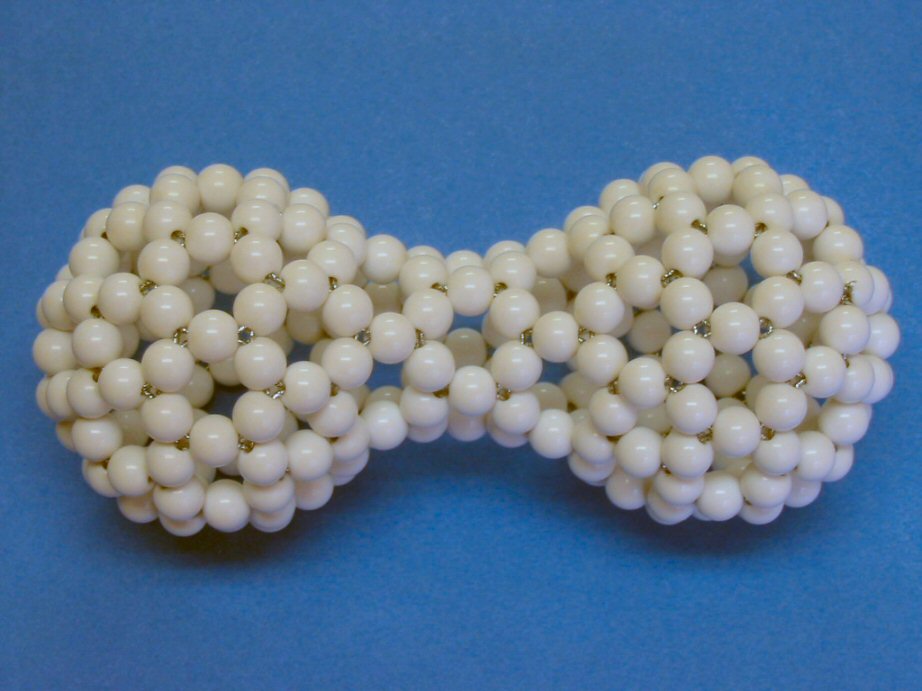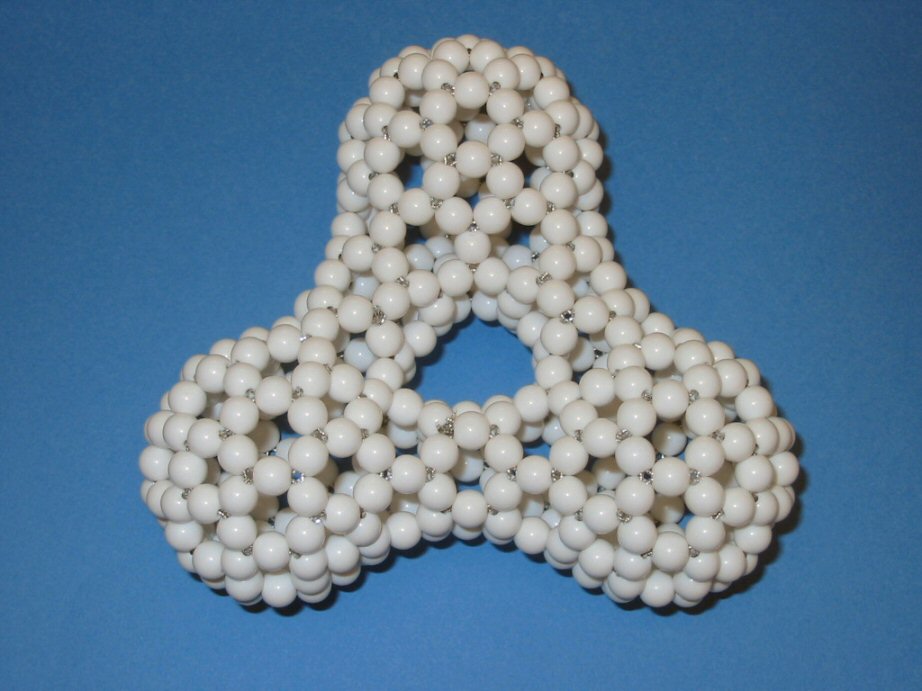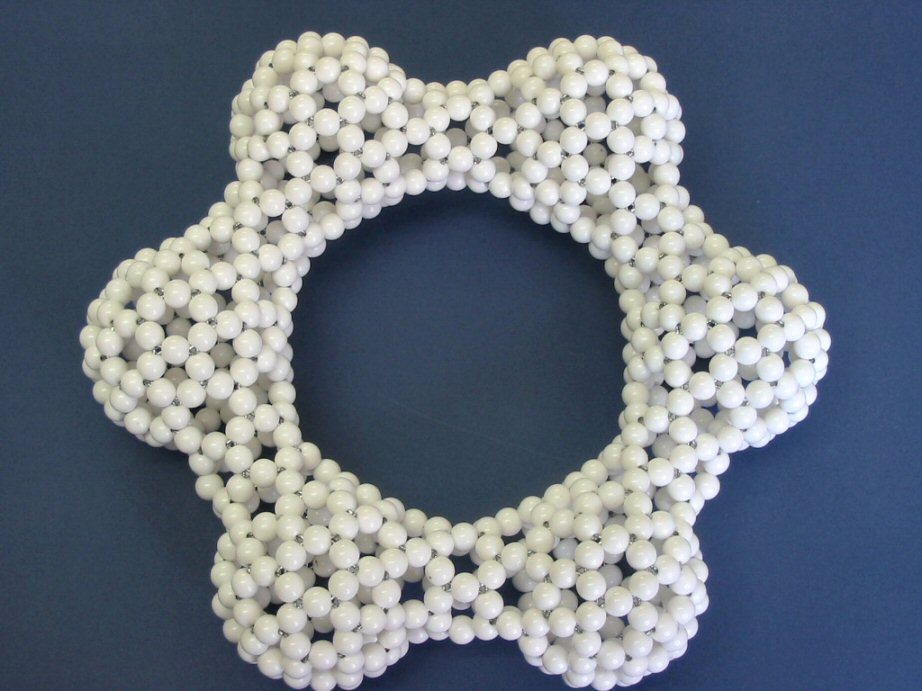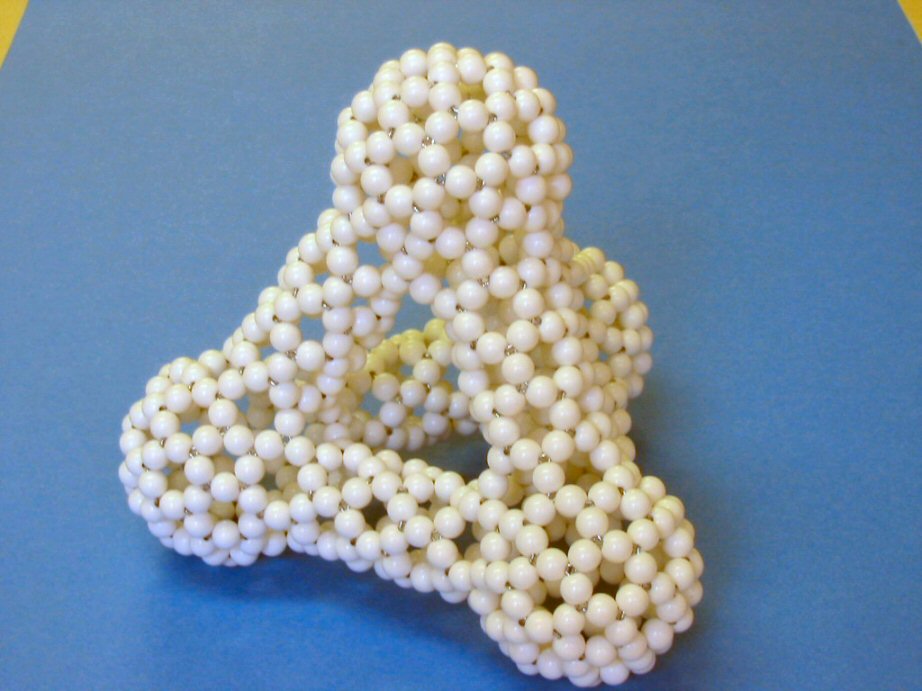I was informed today by Prof. Sonoda about a Japanese site which contains many interesting beaded fullerenes just like we did in this blog. This site (
http://www.u-gakugei.ac.jp/~onodakk/math/beadsindex.htm) is created by a Japanese highschool mathematic teacher, Mr. Kazunori Horibe (堀部和経). In addition to the standard cage-like fullerenes (C60 and C80), kind of toroidal carbon nanotubes similar to our T120, Mr. Kazunori Horibe has also created a number of fullerenes consisted of fused C60.



(Carbon poti donut (波提甜甜圈). I thought about making this kind of structure before, but didn't really try to do it.)

Incidentally, Chern has created a fused C60 dimer a few years ago, see
here. But we didn't pursue further along this direction.
In this site
http://horibe.jp/Gr2F.HTM, I also found this picture dated 1/1/2001:

(The giant structure in this picture is essentially a few unit cells of
C168 with endcaps, I wish I can play with this kind of giant beads someday.)
We can also see here many more extended structures exactly the same or similar to we have created in the last few years.
Apparently, Mr. Kazunori Horibe has played systematically with mathematical beading for fullerene structures much earlier than we did. Please check his site to see the beautiful fullerene structures he has created. Unfortunately, this site is in Japanese, this may be why I didn't find it through google in the last few years.
There seem to be a commercial site by Mr. Kazunori Horibe too:
http://www.ballstructure.com/ballstructure/.
and detailed instruction on the construction of beaded C60:
http://www.ballstructure.com/ballstructure/KA-AmakingB.htm.








